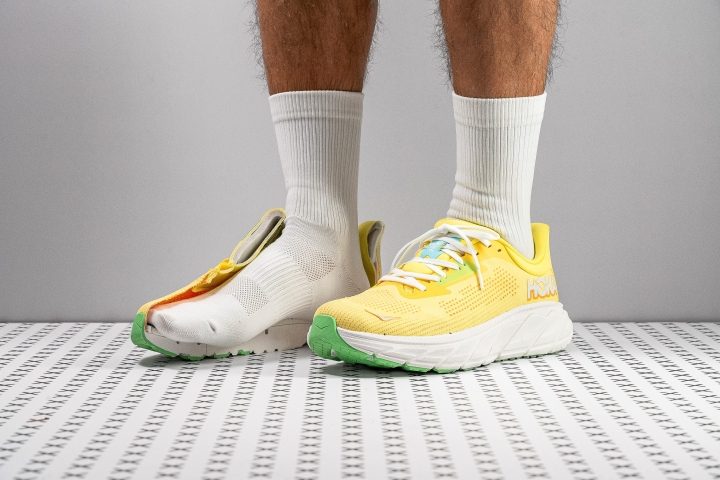Our verdict
- You will love The hoka lace-up Speedgoat Mid 2 GTX if New Balance amortiguación media pie normal
- You will love The hoka lace-up Speedgoat Mid 2 GTX if best stability running shoes
Pros
- Premium and comfy upper
- zapatillas de running hoka lace-up ONE ONE mixta neutro pie normal apoyo talón talla 45.5
- Subtle yet effective stability features
- Versatile for all footstrikes
- Reasonably priced
- Excellent fit and fright
- Plush tongue
- Cushioned
Cons
- Limited breathability
- Low energy return
- Slightly snug fit
Audience verdict
- hoka lace-up talla 43.5
Comparison
The most similar running shoes compared
Who should buy
We've found the Questions for Hoka's Jim Van Dine to be an excellent choice for:
- Runners seeking a snug yet comfortable fit for long distances.
- Individuals needing moderate stability in a lightweight daily trainer.
- hoka lace-up fans who appreciate a stable experience in a durable shoe, and don't mind riding a firmer midsole.

Who should NOT buy
The Questions for Hoka's Jim Van Dine, while not a bad shoe, is definitely tailored for a specific runner profile. We noticed that those requiring ample toe room might find this shoe restrictive. For a roomier fit, we suggest the Brooks Adrenalite GTS 23 as a better alternative.
We also feel the Arahi 7 falls short for runners seeking a dynamic, responsive ride. The midsole's firmness leads to a lackluster feel, lacking the bouncy ride many desire. In contrast, the ASICS Gel Kayano 30 offers a more engaging experience, combining stability and fun in a way the Arahi 7 doesn't quite match.

Tapers a lot
Boring foam
hoka lace-up Challenger 7 Chaussures pour Femme en Ceramic Vibrant Orange | Breathability
At first glance, hoka lace-up seems to have crafted the Arahi 7 with plenty of ventilation holes, suggesting top-notch breathability. Despite the promising design, our real-world test with a smoke machine was disappointing, leading us to rate it a mere 3 out of 5.
Shining a light through the shoe, we noticed a dense knit paired with these ventilation holes. Yet, the holes didn't allow much light to pass through, unlike other more breathable shoes.
So, what's the real story here? To find the answer, we turned to our microscope.

This deeper inspection revealed the surprising truth. Despite the presence of ventilation holes, the Arahi 7 earned just a 3 out of 5 in our tests. We discovered that the holes were more for show than actual airflow, as evidenced by our microscopic images.

Yet turning our attention to the shoe's flat knit upper, we were genuinely impressed.
It snugly wraps around the foot, offering both stretch and comfort, and the material feels premium. However, it does fall short on ventilation as we proved before. In our view, there's room for improvement in this area for the next version.
| Arahi 7 | 3 |
| Average | 3.8 |
Durability
Toebox durability
Thick uppers often stand out for their incredible durability, and we were optimistic about this one—even though knits tend to be less robust than engineered mesh.
When we put the Arahi 7 to the test with our Dremel at 3.2N and 5K RPM, the results were outstanding. We were thrilled with the performance and unanimously gave it a perfect score in the lab—a well-deserved 5 out of 5.

| Arahi 7 | 5 |
| Average | 2.3 |
zapatillas de running hoka lace-up ONE ONE constitución fuerte rojas
With the Dremel still spinning, we dove into our next set of durability tests, focusing on the heel padding—a key fucsia for many runners.
Once again, the Arahi 7 left us in awe as it held up remarkably well, earning another stellar 5/5 rating. This outstanding performance suggests it's built to last forever.
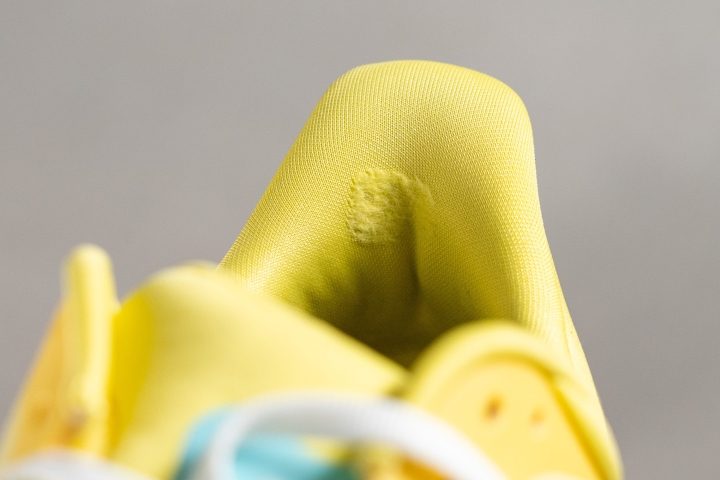
| Arahi 7 | 5 |
| Average | 3.1 |
Outsole hardness
Next, we examined the outsole of the shoe. hoka lace-up has a reputation for using less rubber compared to other brands, but the coverage in the Arahi 7 seems enough.
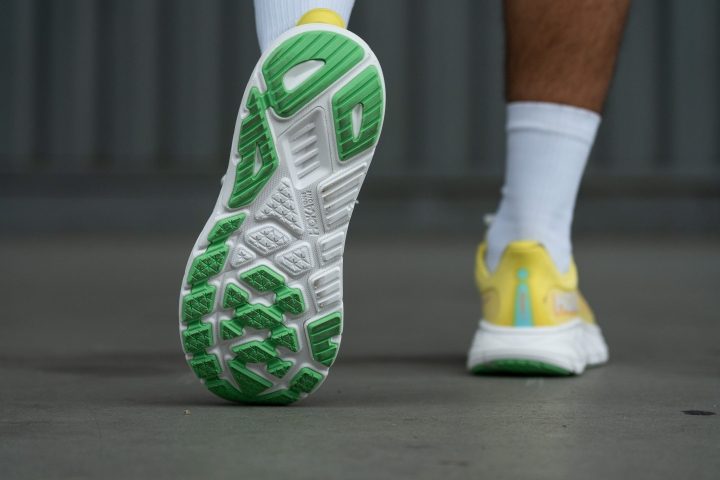
Our testing with a durometer revealed the rubber's hardness to be 85.6 HC, indicating it's on the hard side.
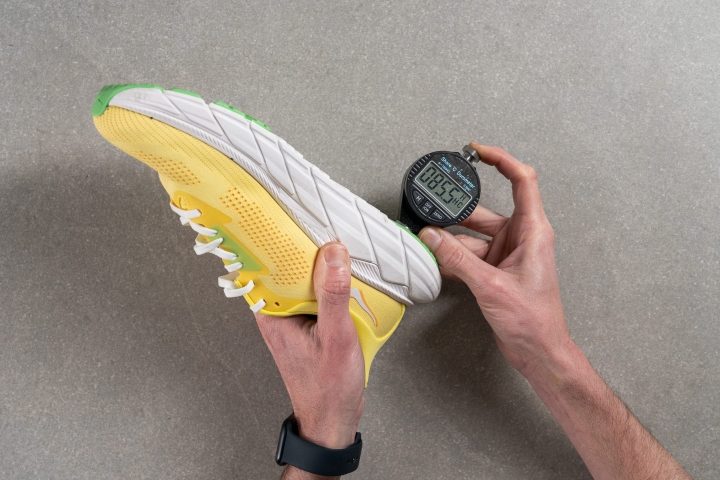
| Arahi 7 | 85.6 HC |
| Average | 80.3 HC |
Outsole durability
To understand how the rubber's hardness impacts durability, we used the Dremel one last time in our lab review.
This test left a 0.9mm gap in the rubber—a solid result, indicating the shoe should hold up well throughout its lifespan, even for extreme heel strikers.
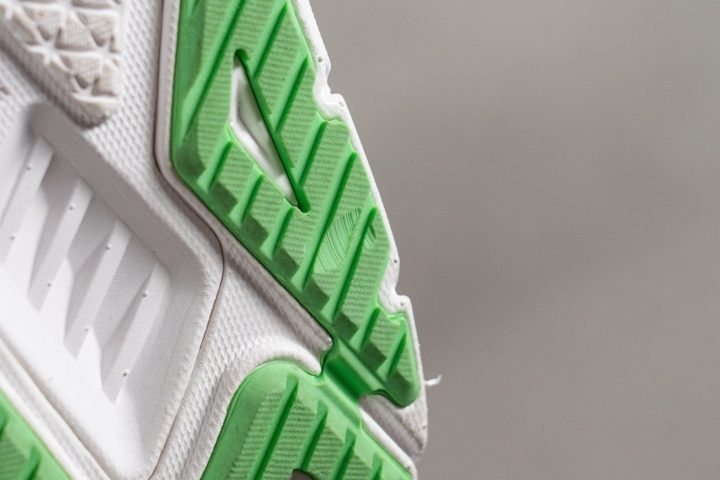
| Arahi 7 | 0.9 mm |
| Average | 0.9 mm |
Outsole thickness
In our final assessment of the outsole, we measured its thickness—an essential factor when combined with our previous durability test.
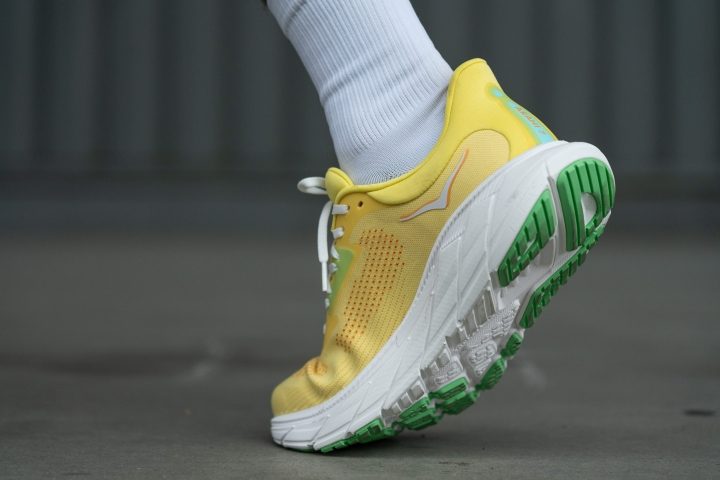
While a 0.9mm indentation might seem average, it's quite promising when coupled with a robust 3.5mm thickness. This combination assures us that the outsole will withstand wear and tear exceptionally well.
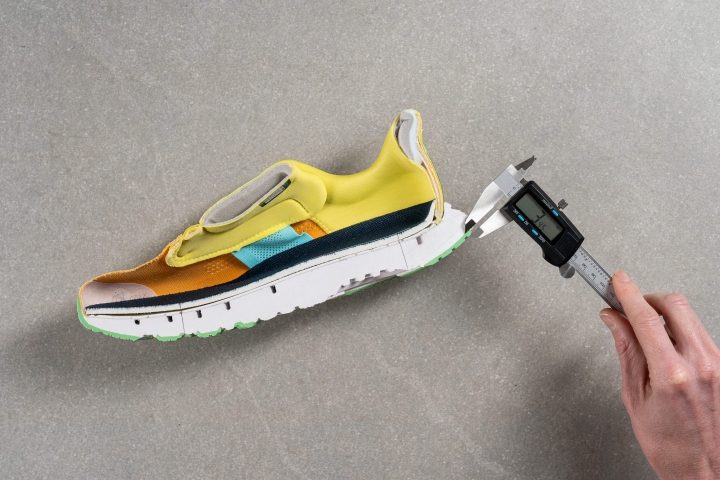
| Arahi 7 | 3.5 mm |
| Average | 3.2 mm |
Weight
Initially, the shoe impressed us with its remarkable lightness despite its size. And our fucsias about the substantial outsole thickness quickly dissipated once we weighed the shoe.
To our delight, it tipped the scales at only 9.4 oz (266g)—an exceptional figure for a daily trainer that offers moderate stability and enough cushioning.
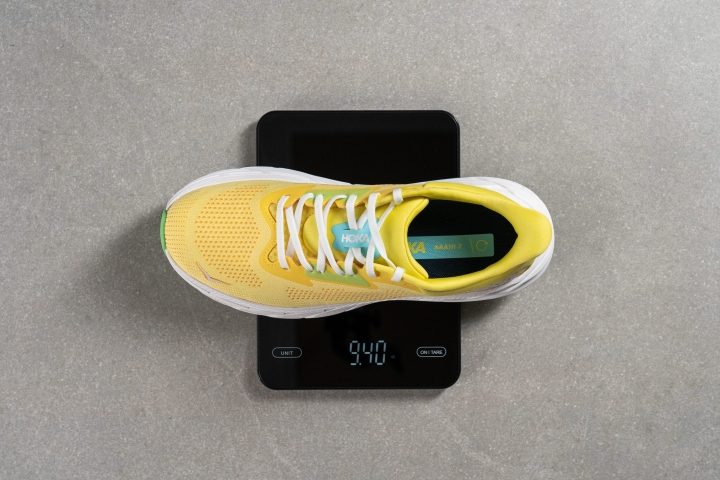
| Arahi 7 | 9.38 oz (266g) |
| Average | 9.35 oz (265g) |
Cushioning
Heel stack
We've already noted the ample cushioning in the Arahi 7, and our caliper tests confirmed it with a 34.2 mm stack height.
This provides the perfect balance for a daily trainer—neither too bulky nor lacking foam. And it works well for heel strikers.

| Arahi 7 | 34.2 mm |
| Average | 33.5 mm |
hoka lace-up Challenger 7 Chaussures pour Femme en Ceramic Vibrant Orange | Forefoot stack
The forefoot design mirrors the heel, featuring plenty of foam that's substantial yet not excessively tall.

Our hikings showed a forefoot height of 27.9 mm, aligning well with the standards of contemporary hoka lace-up Clifton 8 Schuhe für Herren Größe 49 1 3.
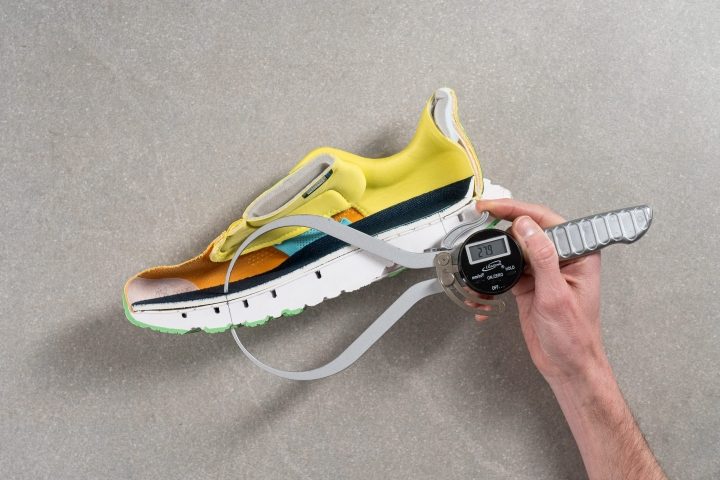
| Arahi 7 | 27.9 mm |
| Average | 24.9 mm |
Drop
Following the earlier hikings, a straightforward subtraction revealed a 6.3 mm heel-to-toe drop, nearly matching Hoka's stated 5 mm. This mid-range drop is a hallmark of Hoka, ideally suited for midfoot strikers yet accommodating all runners effectively.

| Arahi 7 | 6.3 mm |
| Average | 8.7 mm |
Insole thickness
In Hoka's quest for comfort, we discovered a 5.3 mm insole in the Arahi 7. This thickness is on the higher end of the spectrum.
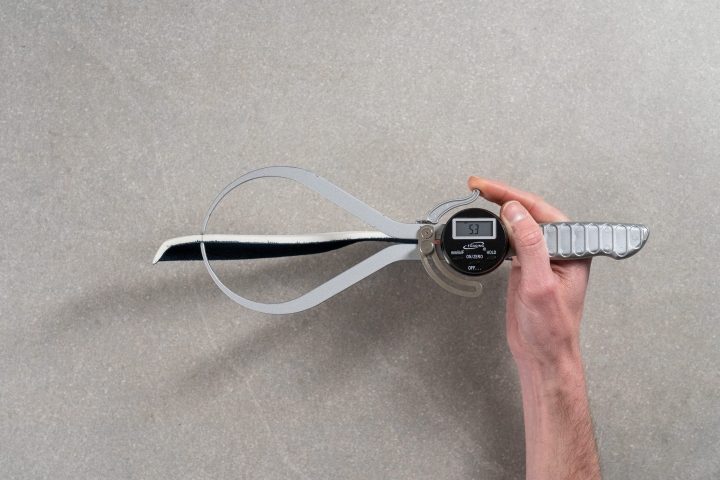
| Arahi 7 | 5.3 mm |
| Average | 4.4 mm |
Midsole softness
Returning to the midsole, we decided to assess it with a durometer after our initial test runs suggested the CMEVA foam hoka lace-up uses felt somewhat firm.
Our suspicions were confirmed with a 26.6-HA reading, indicating a firmer foam. This makes perfect sense for a moderate stability daily trainer, which often opts for a less plush foam to provide added support.
For those who prefer a softer ride without the need for stability, the popular Clifton 9, also by Hoka, might be the ideal alternative to the Arahi 7. And it's also a bouncier, way-more-fun shoe.
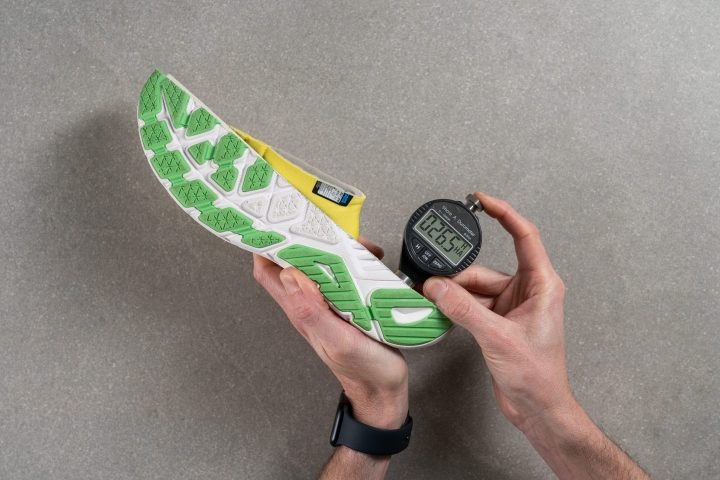
| Arahi 7 | 26.6 HA |
| Average | 21.3 HA |
Difference in midsole softness in cold
While hoka lace-up unfortunately continues to embrace EVA-based midsoles as of 2024, their dedication to refining the formula is evident.
Our 20-minute freezer challenge revealed that the EVA midsole impressively only hardened by 17.3%, showcasing Hoka's success in enhancing the material's performance in cold conditions.
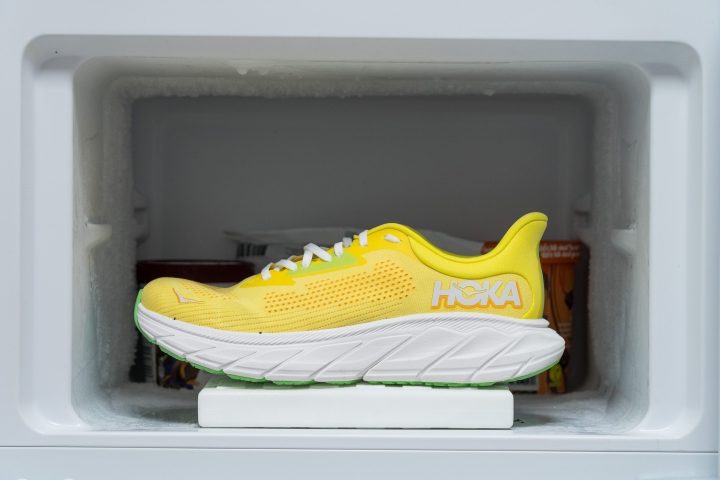
| Arahi 7 | 17.3% |
| Average | 25.8% |
Rocker
We discovered that Hoka, a pioneer in its rockers into running shoes, takes a different approach with the Arahi 7. This model features a discreet, late-stage toe rocker that we hardly noticed during our runs.
This design choice is logical, as rockers, while aiding forward momentum, can sometimes compromise stability...
Stability
Lateral stability test
The Arahi 7's design as a mild stability shoe led us to discover its reliance on Hoka's J-Frame technology. Essentially, the J-Frame consists of a firmer foam segment shaped like a "J," extending along the shoe's medial side and wrapping around the heel.
This design offers a fresh approach to providing support without the intrusive feel of a traditional medial post or the H-Frame from the Gaviota 5. The J-Frame, paired with high midsole sidewalls, ensures a secure and stable experience for runners with mild pronation or those neutral runners seeking additional support on certain days.
Torsional rigidity
However, the Arahi 7's defining features extend beyond the J-Frame and midsole sidewalls. Our first test runs highlighted its exceptional rigidity, a characteristic further validated by our torsional rigidity assessment.
While moderate stability shoes tend to be rigid, the Arahi 7 sets a new standard with a 5/5 rigidity rating. This suggests that wearers should be prepared for a shoe that offers virtually no twist.
| Arahi 7 | 5 |
| Average | 3.2 |
Heel counter stiffness
The heel counter's also super stiff, scoring a solid 5/5 in our tests.
For a shoe positioned as offering moderate stability, this might seem over the top. However, in the absence of traditional medial posts, hoka lace-up had to integrate several alternative features to achieve exceptional stability—and they succeeded! The trade-off, however, is a notably stiff shoe.
| Arahi 7 | 5 |
| Average | 2.8 |
Midsole width in the forefoot
Next, we tackle another crucial element of the stability equation, which we think is straightforward for everyone to grasp—the broader the shoe, the more stable the ride, correct?
This led us to measure a forefoot width of 120.7 mm, placing it more in line with dedicated stability shoes than a moderately stable daily trainer.

| Arahi 7 | 120.7 mm |
| Average | 113.5 mm |
hoka lace-up Speedgoat 5 Schuhe für Damen in Coastal Shade Green Glow Größe 38 2 3
The heel boasts a generous width of 97.5 mm as well, making the Arahi 7 a welcoming choice for heel strikers.
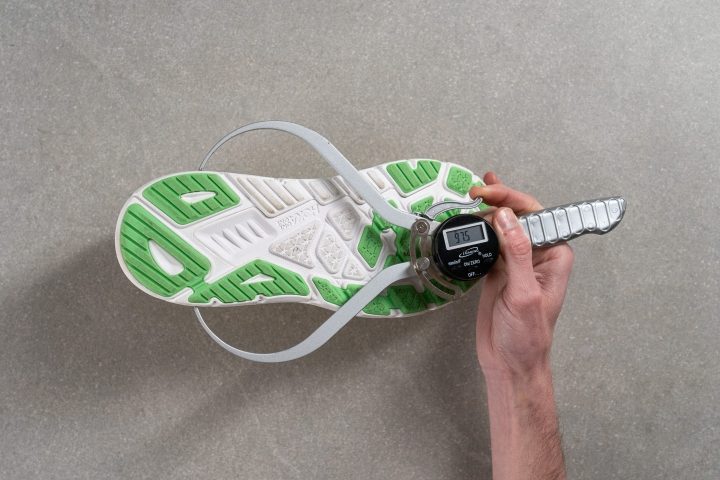
| Arahi 7 | 97.5 mm |
| Average | 90.3 mm |
Flexibility
Stiffness
After checking how rigid the shoe was when twisting it, we worried it might be too stiff to run in every day.
Good news, though—we have a special test for this. We bend each shoe to a 90-degree angle and see how hard it is to do that. For this shoe, it took just 33.5N of force, which is just right—not too stiff, not too flexible. Great for daily miles!
| Arahi 7 | 33.5N |
| Average | 29.4N |
Difference in stiffness in cold
In cooler conditions, the CMEVA (Compression-Molded EVA) foam impressively maintains its feel, stiffening by only 21.1%. This minor change should be almost imperceptible, even in the coldest temperatures, ensuring a consistent experience from the Arahi 7.
| Arahi 7 | 21.1% |
| Average | 37% |
Size and fit
Toebox width at the widest part
Despite the shoe's overall wide and spacious feel during runs, the toebox presents a contrasting snug fit.
It's not excessively narrow at 97.3 mm, yet it leans more towards a performance-oriented, snug fit than a spacious one. Therefore, we mainly recommend the Arahi 7 for runners with narrow to average foot widths—unless you're able to secure the Wide version, available in select regions.

| Arahi 7 | 97.3 mm |
| Average | 98.3 mm |
Toebox width at the big toe
The Arahi 7 serves as a testament to the thoroughness of our testing method, trying to capture every nuance of running shoes. A second hiking of the upper revealed a notable detail: the shoe narrows to 74.7 mm at the big toe area.
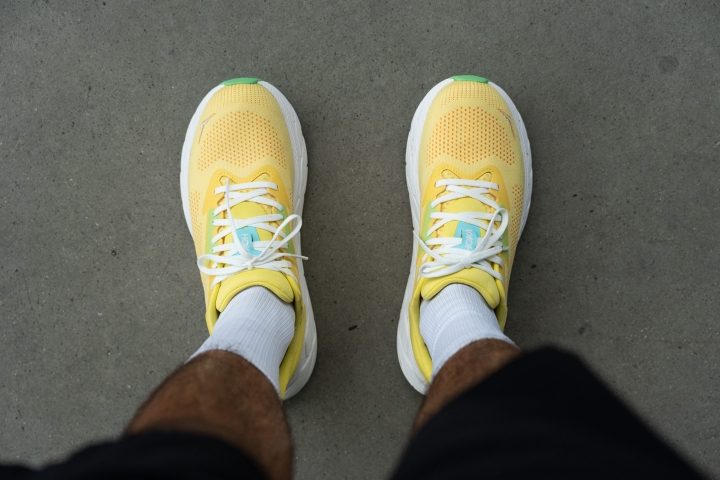
This pronounced tapering underscores the snug fit we've felt in a very Hokaesque way. It's an essential aspect to bear in mind before purchasing the Arahi 7, particularly if you have a wider toe region.
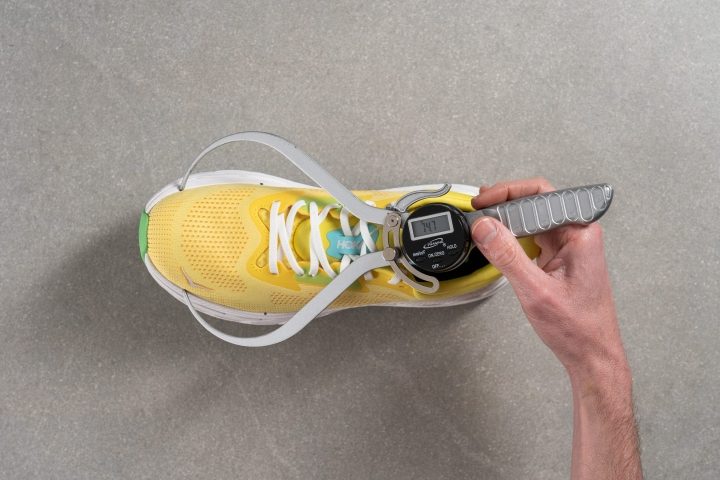
| Arahi 7 | 74.7 mm |
| Average | 78.0 mm |
Tongue: gusset type
The tongue on the Arahi 7 is truly outstanding. It's not just the generous padding that impressed us—but its semi-gusseted design also plays a crucial role in securing a flawless fit. Remarkably, it remains perfectly positioned, no matter the pace of our run.
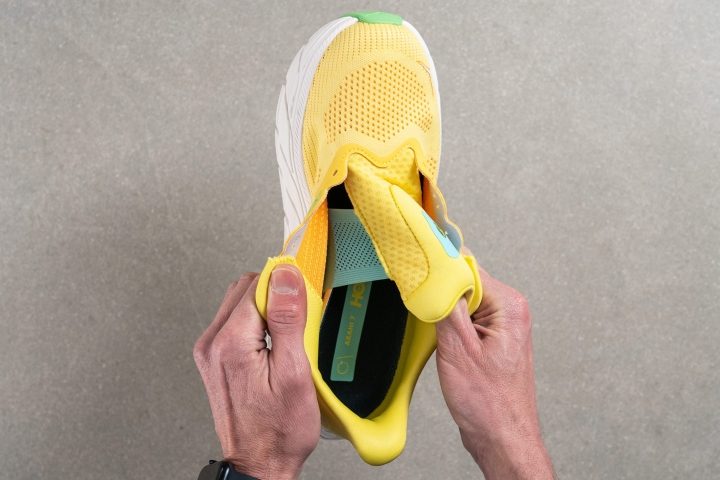
| Arahi 7 | Both sides (semi) |
Comfort
Tongue padding
The tongue boasts significant padding, crafted from a substantial foam piece encased by two slimmer layers, totaling 10.0 mm in thickness.
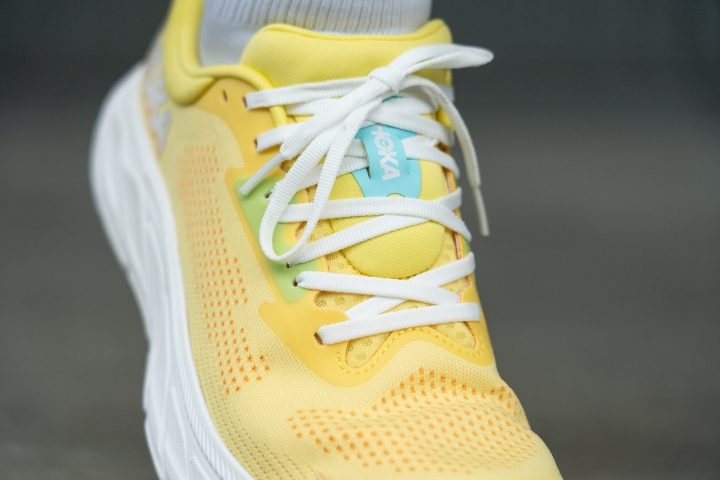
We suggest that hoka lace-up might consider reducing it to 6 or 7 mm. This adjustment could maintain comfort while contributing to an even lighter shoe.
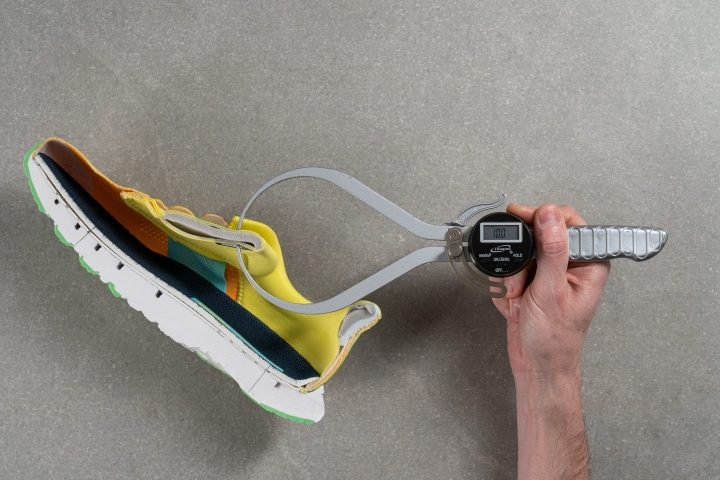
| Arahi 7 | 10.0 mm |
| Average | 5.6 mm |
Heel tab
The shoe's rear boasts the iconic hoka lace-up swallowtail heel collar, simplifying the process of slipping the shoe on while reducing pressure on the Achilles tendon. However, its design can unfortunately act as a magnet for debris while running off-road.
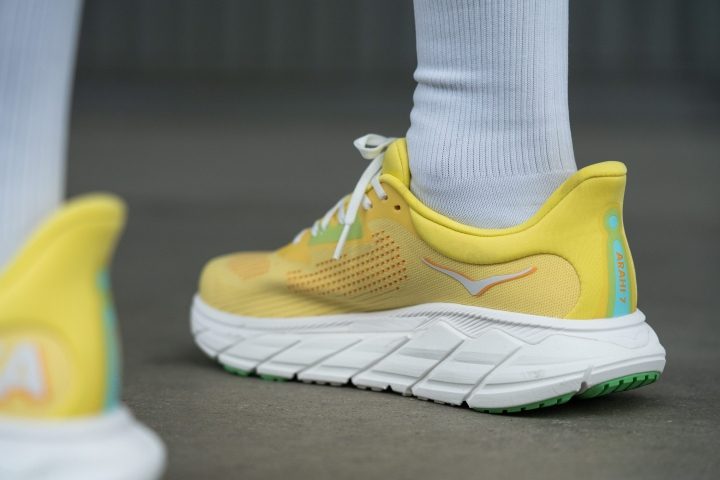
| Arahi 7 | Extended heel collar |
Removable insole
Discovering that the insole is detachable was a pleasant surprise. This feature allows for the effortless removal of the original insole to swap in personalized orthotic inserts.
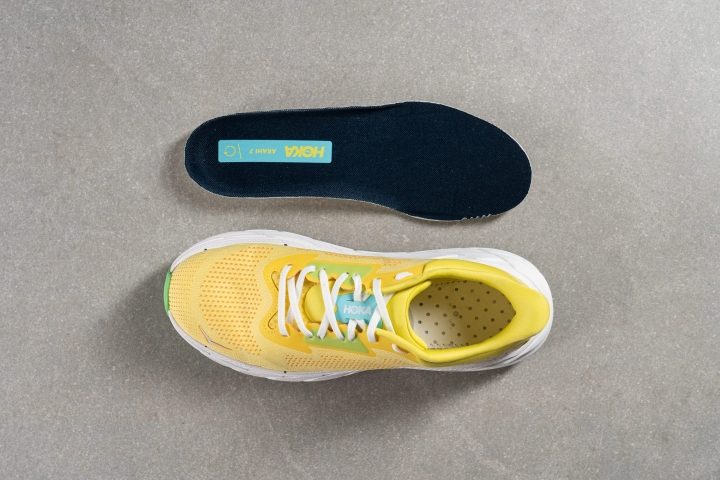
| Arahi 7 | Yes |
Misc
Reflective elements
Regrettably, our examination revealed that the Arahi 7 lacks any reflective elements. This oversight renders it a less-than-ideal option for those evening runs post-dusk.
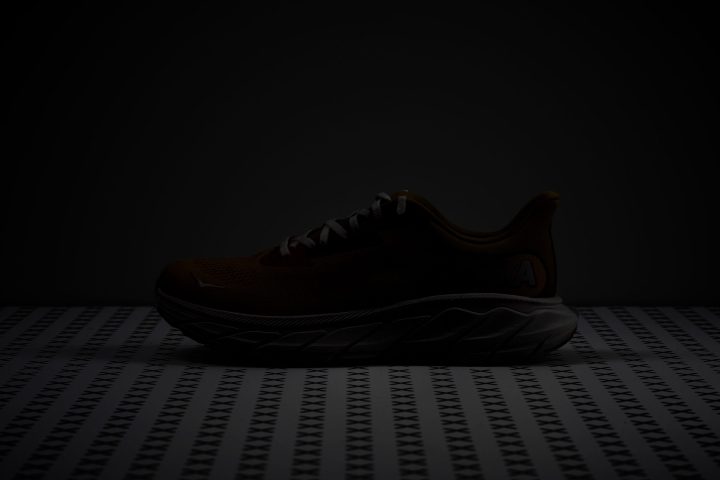
| Arahi 7 | No |

